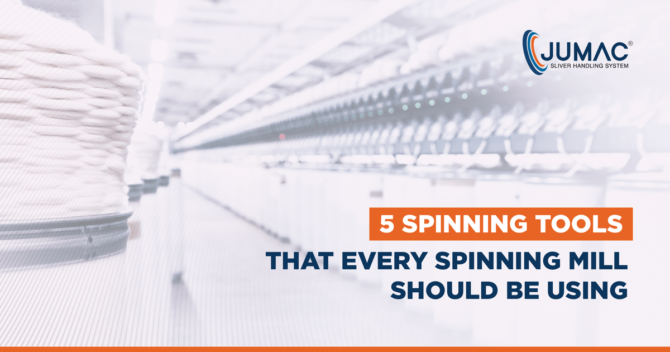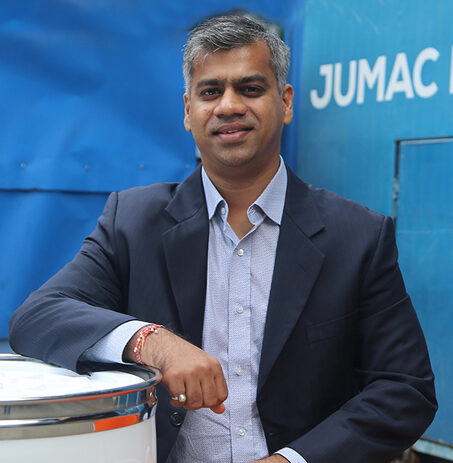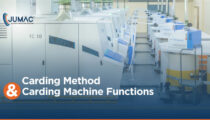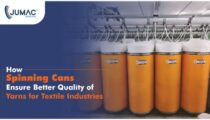Often referred to as the ‘heart of the spinning process’,…

5 Spinning Tools that Every Spinning Mill Should Be Using
The Indian textile & yarn industry is growing at a fast clip. The sector is showing definite signs of recovery from the pandemic situation – and with the advancement of technology, spinning mills are being able to optimise their productivity and yarn quality levels. Regular inspections are organised at all the leading mills, to ensure that all production machinery – including HDPE spinning can & related accessories – are operating efficiently. Over here, we will take a look at some important spinning tools that any good spinning mill should be using:
1. Combing Machine
The combing machine (alternatively known as ‘comber machine’) is one of the most important tools in any modern-day spinning mill setup. This machine is primarily used to boost the strength, consistency and overall quality of the fibres. External impurities, short fibres and other contaminants are removed from the system by the combing machine.
As its name suggests, the combing machine comes with a comb that extracts the short fibres and neps, and straightens the fibres – to maintain the uniformity of the latter. The ‘combed yarn’ is highly compact, smooth and strong, and typically has higher count as well. Since length variations in fibres are minimised, there are practically no chances of yarn inconsistencies.
While using combing machines, spinning mill workers need to keep an eye out for the volume of waste material that is being generated. When used correctly, combing machines optimise the luster and smoothness of yarn material, and improve the fibre spinning value. To ensure longevity and smooth combing operations, good-quality fibres should be used – and the machine should be maintained with due care.
2. Carding Machine
In order to optimise the overall efficiency and productivity, spinning mills rely on the functions of carding machines in a big way. Individual fibres are prepared by these machines, and neps (if any) are removed. Sliver continuity is ensured and the fibre distribution is made uniform. Many advanced carding machines have custom closed loop controls that do away with sliver irregularities.
Fibres have to be processed in a specific sequence for generating the yarns. Carding machines assist in these tasks. Generally two types of carding machines – for wool carding and cotton carding – are available in the markets. There are important carding segments and stationery flats that have to be fitted carefully in the carding machines, for optimal performance.
The benefits of using a properly functioning carding machine are manifold. For starters, flat clothing loads and cylinders are minimised, while short staples are removed, and fibre orientation & separation is optimised. Continuous suction is facilitated by the multi-suction feature of carding machines. The cleaning efficiency and work percentage of the machine has to be checked regularly. Flats, doffer, cross apron, and the electrical control system are all important parts of the carding mechanism.
3. Rotor Spinning Machine
The productivity of a spinning mill hinges crucially on the performance and reliability of the rotor spinning machines it employs. This spinning tool has a powerful mechanism for impurity discharge and self-exhausting features. The rotor spinners have a transverse system and a drive-side frame – and they are adjusted by high-power inverters.
The utility of a rotor spinning machine is determined by the average rotor speed of the system (mills generally require rotor speeds northwards of 50000-55000 r/min). The spinning stability is improved, since open-end yarn twisting and related problems are eliminated. The machine generally also has a robust central control system for the required air pressure adjustments.
Spinning mills typically prefer rotor spinning tools that are lightweight, and help in enhancing the longevity of the bearings. Fibre wrapping is prevented, and superior quality spun yarn is generated (and piecings are reduced). The onus is on mills to have the rotor spinners inspected regularly – to ensure that the machine performance does not diminish over time.
4. HDPE Spinning Can & Accessories
The importance of spinning cans made with high-density polyethylene (HDPE) for boosting yarn quality levels is going up all the time. Manufacturers generally offer sliver cans of different diameters – in order to ensure that the varied spinning requirements of mills are met in the best possible manner.
The best spinning cans stand out in terms of versatility, and are designed for usage in all the stages of yarn spinning. Thanks to the advancement of technology, the sliver loading capacities of present-day spinning cans are increasing. This, in turn, is pulling up efficiency levels and cutting down the on-floor operational times.
There are several types of sliver imperfections that can affect the overall quality of spinning mill output. To minimise these, spinning mills typically rely on caster wheels, springs, draw frames and other accessories that do away with problems like sliver stretching, sliver deflection, sliver breakage, fluff accumulation, and other possible issues. Leading sliver can manufacturers, like Jumac Cans, have a wide range of spinning can accessories in their portfolio.
5. Draw Frame
Draw frames are yet another extremely important tool in spinning mills. These help in straightening the fibres, which can otherwise remain hooked and/or crimped. The draw frame machine helps in seamless transformation and quality maintenance of the sliver that is generated by the carding machines. Depending on the nature of operations, spinning mills can use autoleveller or non-autoleveller draw frame systems.
With the help of draw frames, spinning mills can ensure superior yarn leveling and blending at optimal speeds. Easy adjustability is, more often than not, a hallmark of the best draw framing tools – while the top roller lapping is generally low. Several leading spinning mills use lap-former machines and draw frame machines together, to ensure smooth fibre parallelisation.
Sophisticated draw frames at mills can also be fitted with microprocessors, to enhance their performance and boost usability. If there are any eccentricities in the top roller, inspections need to be conducted – to identify and resolve the underlying glitches. Sliver quality is optimised by these machines, since probable defects are ironed out at the very outset.
Flow cleaners, beaters, and lap formers are some of the other spinning tools that are found in practically all the top spinning mills. The role of spinning can is extremely vital in determining the quality of the yarn output, while mill owners also need to make sure that all other production machinery are working properly. The staff members also need to be trained on a regular basis – so that they can use the machines & equipment in the best possible manner. At the end of the day, it is all about optimally combining human skill & expertise with technological excellence – if mills can ensure that, they will be all set to prosper in this fast-growing industry.

Passionate about transforming the industrial sector of textile and spinning industry with innovative solutions. Director at Jumac Manufacturing, leading spinning cans and accessories manufacturer and exporter from Kolkata, India.









